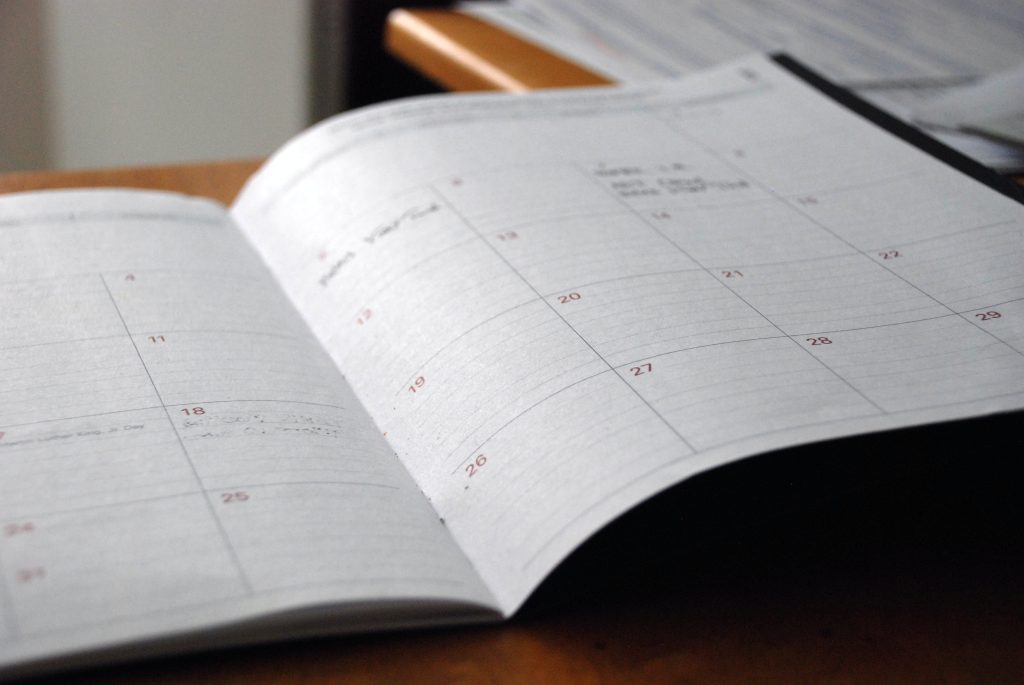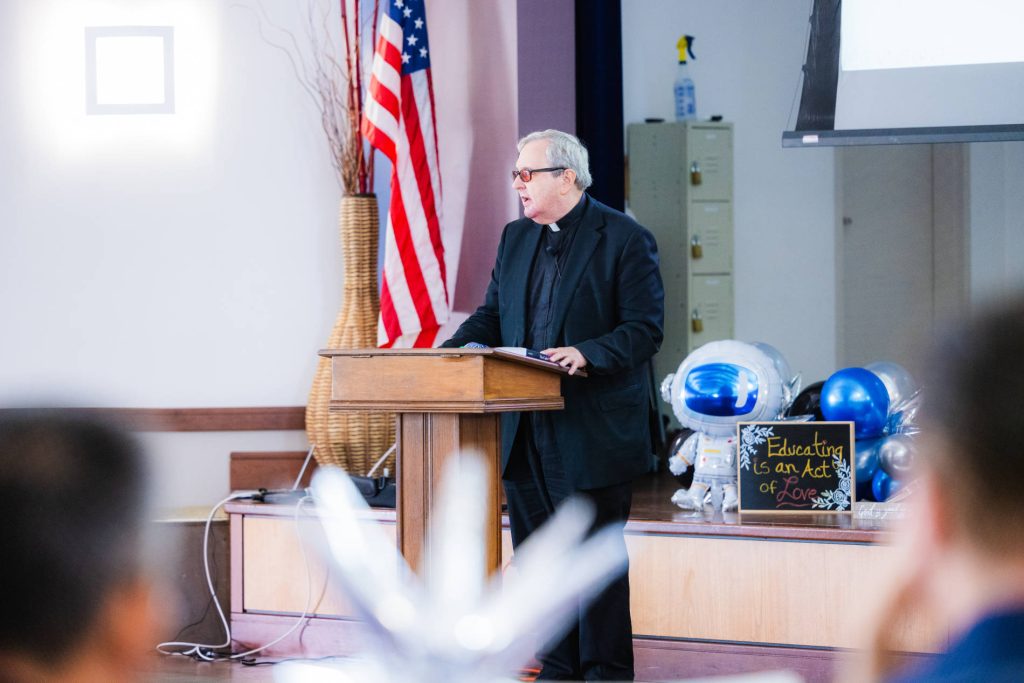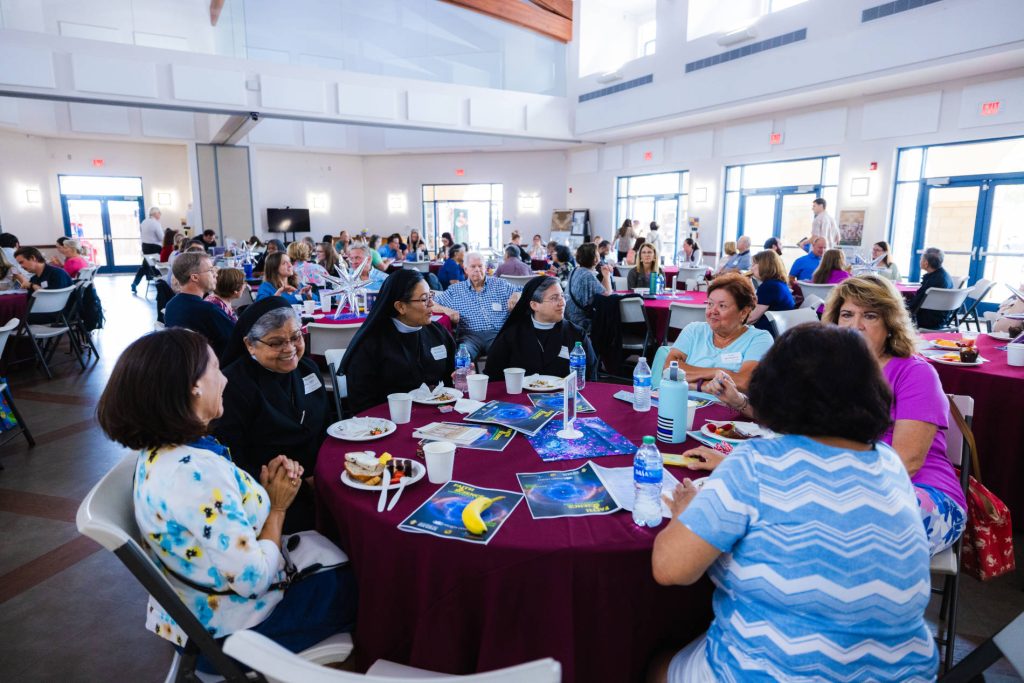SAN DIEGO — Thirty-two Catholic youth spent four hours on a rainy Saturday morning inside St. Didacus Parish Hall, and that’s where they discovered what happiness is all about.
“True Happiness” was the theme of a middle-school retreat, held Feb. 25, that brought together sixth- through eighth-graders from St. Didacus Parish and School, as well as Our Lady of the Sacred Heart Parish.
The retreat was led by Yacob Serawit, a junior at Mater Dei Catholic High School in Chula Vista, and based on one of the “seven essential modules” in the Magis Center’s faith-and-science curriculum.
The Diocese of San Diego introduced the curriculum into its elementary schools and parish religious-education programs in fall of 2021, starting with “Evidence of God’s Existence from Science” (Module 2). “True Happiness” (Module 6) followed in fall of 2022.
The curriculum was developed by Jesuit Father Robert Spitzer in response to troubling statistics showing that 42% of young people will lose their faith before age 25 and almost half of these will do so out of a mistaken belief that science and religion are incompatible.
The median age for religious disaffiliation is age 13.
The retreat at St. Didacus began with a reading from the first chapter of St. John’s Gospel and concluded with a pizza lunch. In between, participants watched five short videos from the Magis Center’s “True Happiness” module: an introduction to the four types of happiness and subsequent videos that focused on each one in turn.
According to the videos, the four types of happiness are: pleasure; ego-comparative, which comes from feeling or appearing superior to others; contributive, which involves having a positive impact on others; and transcendent, which is associated with a connection to God.
Pleasure is the lowest level of happiness because it is typically fleeting and neither affects others nor produces substantive change in the one who experiences it. Transcendent happiness, on the other hand, ranks highest because it affects many and can continue into eternity.
Four of the videos were followed by an organized activity, such as a Lego-building competition, and time for the participants to write in prayer journals.
Serawit planned and led the retreat as the service project he was required to complete as a recipient of his school’s Dr. Estelle L. Kassebaum Scholarship.
An alumnus of St. Didacus School, he reached out to Elena Platas, director of religious education at St. Didacus Parish, for help coming up with a suitable project. Platas told him of her idea for a middle-school retreat, explaining that she felt that it needed “a younger mind” to put it together.
Serawit met with Platas weekly, beginning in November, to prepare for the retreat.
Planning the retreat was instructive for Serawit, who said the lessons “opened my eyes to how I perceive happiness.”
“The only way that you can become truly happy is through Christ,” he said, “and I feel like that’s really the big takeaway that we try to give to these kids.”
Platas said that, in November, she was among the organizers and leaders of a “True Happiness” retreat for high school students in the Cathedral Deanery. About 150 youth from St. Didacus, Our Lady of the Sacred Heart and Our Lady of Guadalupe (Barrio Logan) parishes attended that event, which was held at Our Lady of the Sacred Heart Parish.
She said the middle-school retreat had a different feel than that earlier one, and that is attributable to Serawit.
Explaining that older retreat leaders can make things overly complicated, Platas said, “I think (Serawit) can relate to the kids much better. … We really need (young people to help us) because they can reach out to this community much better than we do.”
Andrea Betancourt, a seventh-grader at Pershing Middle School in San Carlos and a St. Didacus parishioner, said the retreat enabled her “to look at happiness in a different way.”
“This retreat was really nice,” she said, “and this was a nice place for young people to understand happiness a bit more and … to dig a little deeper into (their) faith.”
She also expressed appreciation for Serawit’s commitment.
“I thought it was really nice that he’s involving himself at this age,” she said, “and teaching other kids to follow in his footsteps.”
Marioly Galván, chancellor of the Diocese of San Diego and director of the Office for Evangelization and Catechetical Ministry, said it’s cause for “great joy” that young people are coming together to reflect on the intersection of faith and science, with their “minds … opened to the beauty that is our Catholic faith.”
Events like the retreat are the fruits of a process that began more than four years ago, when the diocesan Office for Schools and the Office for Evangelization and Catechetical Ministry were tasked by Cardinal Robert W. McElroy with implementing the Magis Center’s faith-and-science curriculum in all Catholic elementary schools and parish faith-formation programs in the diocese.
Galván said several parishes and schools have already hosted faith-and-science fairs, as well as retreats for both junior high and high school youth, to introduce the material.
This year, she said, the diocese will review the implementation of the two modules, “Evidence of God’s Existence from Science” and “True Happiness,” and give teachers and catechists an opportunity to share best practices.
Beginning in the next catechetical year, which starts on Catechetical Sunday (Sept. 17, 2023), faith-and-science workshops for teachers and catechists will be offered quarterly in English and Spanish, both in San Diego and Imperial counties.









